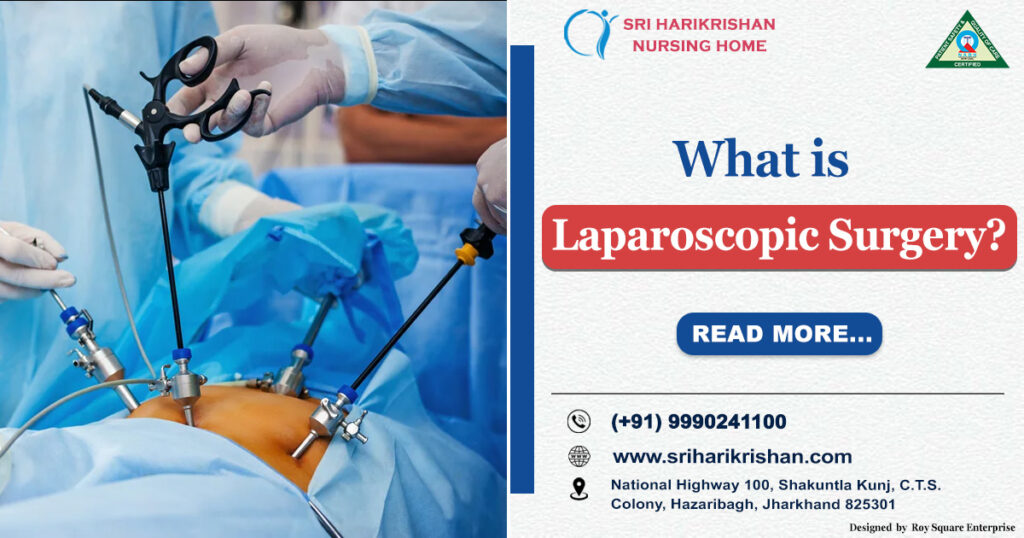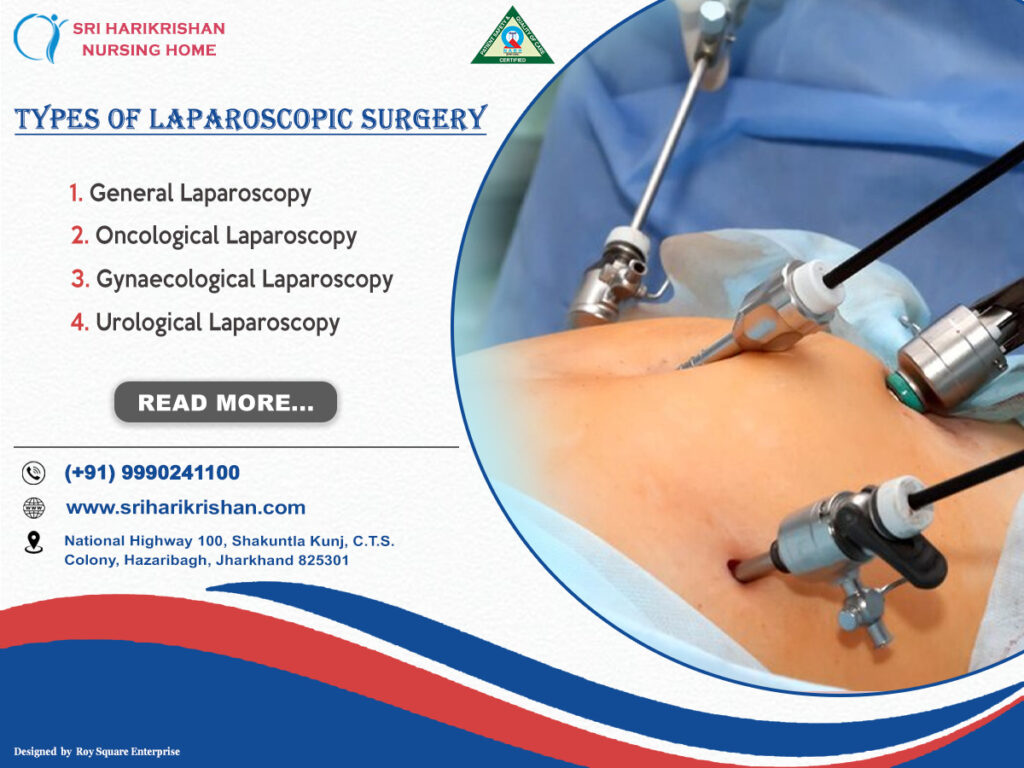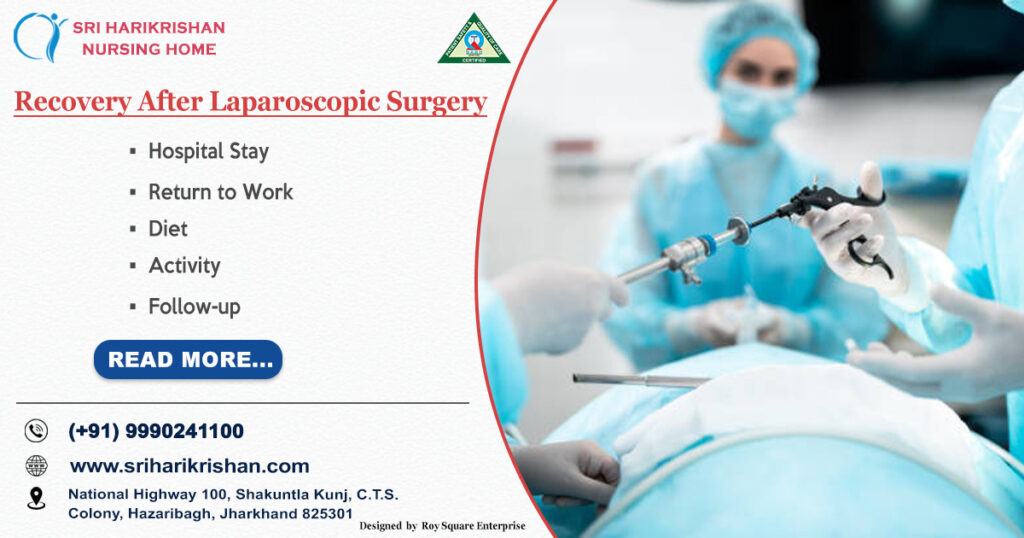Laparoscopic surgery, often called minimally invasive surgery, has revolutionized modern medicine. Unlike traditional open surgery that requires large cuts, laparoscopic procedures are performed through tiny incisions using a special instrument called a laparoscope. This method reduces pain, speeds up recovery, and leaves minimal scars—making it the preferred choice for millions of patients worldwide.
In this comprehensive guide, we’ll cover everything about laparoscopic surgery—from description, symptoms, and causes to types, treatment, diagnosis, recovery, myths, and FAQs. We’ll also highlight the expertise of Dr. Satveer Singh, Consultant Surgical Oncologist (Breast), Laparoscopic & Endoscopic Surgeon at Sri Harikrishan Nursing Home, who is renowned for advanced laparoscopic techniques and patient-focused care.

What is Laparoscopic Surgery?
Laparoscopic surgery is a minimally invasive surgical technique where small incisions (0.5–1.5 cm) are made, and a laparoscope (a thin tube with a camera) is inserted to guide the surgeon. The high-definition visuals allow the surgeon to perform complex procedures with precision.
It is widely used for conditions involving the:
- Gallbladder
- Appendix
- Hernia
- Colon and intestines
- Uterus and ovaries
- Cancers (including breast and gastrointestinal cancers)
Why is Laparoscopic Surgery Done?
Laparoscopic surgery is performed for both diagnostic and therapeutic purposes.
Diagnostic Reasons
- To detect tumours or growths.
- To investigate unexplained abdominal or pelvic pain.
- To evaluate conditions like endometriosis or infertility.
Treatment Reasons
- Removal of gallbladder (cholecystectomy).
- Removal of appendix (appendectomy).
- Hernia repair.
- Cancer surgeries (breast, colon, ovarian, etc.).
- Bariatric (weight loss) surgery.
Symptoms That May Require Laparoscopic Surgery
Patients may experience different symptoms depending on the underlying condition, such as:
- Persistent abdominal pain.
- Chronic bloating or indigestion.
- Unexplained weight loss.
- Swelling or lumps (in cases of hernia or tumor).
- Heavy menstrual bleeding or pelvic pain (gynecological cases).
- Severe gallstone or appendicitis pain.

Types of Laparoscopic Surgery
Laparoscopy has various applications across specialties:
- General Laparoscopy – Gallbladder, appendix, and hernia.
- Oncological Laparoscopy – Cancer removal surgeries (breast, colon, ovarian, etc.).
- Gynaecological Laparoscopy – Ovarian cysts, hysterectomy, infertility treatment.
- Urological Laparoscopy – Kidney and bladder surgeries.
- Bariatric Laparoscopy – Weight-loss surgery (gastric sleeve, gastric bypass).
- Thoracoscopy Surgery – For chest and lung-related issues.
Causes That Lead to Laparoscopic Surgery
Some common medical causes include:
- Gallstones or gallbladder inflammation.
- Appendicitis.
- Hernia.
- Fibroids or ovarian cysts.
- Gastrointestinal cancers.
- Obesity requiring bariatric surgery.
- Endometriosis.
- Tumours growth.
Diagnosis Before Laparoscopic Surgery
Before suggesting laparoscopic surgery, doctors may recommend:
- Ultrasound – Detects gallstones, cysts, or hernias.
- CT scan / MRI – Provides detailed images of organs.
- Blood Tests – Checks for infection or organ function.
- Endoscopy / Colonoscopy – Evaluates digestive tract issues.
Once the diagnosis confirms the condition, laparoscopic surgery is chosen for faster and safer treatment.
Benefits of Laparoscopic Surgery
- Smaller incisions → minimal scars.
- Less postoperative pain.
- Faster recovery compared to open surgery.
- Shorter hospital stays.
- Reduced risk of infection.
- Quick return to normal activities.
According to Dr. Satveer Singh, laparoscopic surgery ensures high precision, less trauma to tissues, and excellent long-term outcomes—making it a preferred treatment option at Sri Harikrishan Nursing Home.

Recovery After Laparoscopic Surgery
Recovery depends on the type of surgery, but in general:
- Hospital Stay: 1–3 days.
- Return to Work: 1–2 weeks for minor surgeries, 3–4 weeks for major ones.
- Diet: Start with light, liquid diet; progress to solids as tolerated.
- Activity: Gentle walking encouraged; avoid heavy lifting for a few weeks.
- Follow-up: Regular visits to monitor healing.
Most patients experience smoother recovery compared to open surgery.
Complications (Rare but Possible)
While laparoscopic surgery is generally safe, complications may include:
- Bleeding.
- Infection at incision sites.
- Injury to nearby organs.
- Blood clots.
- Reaction to anaesthesia.
Such risks are minimized when performed by experienced specialists, who ensures patient safety at every step.
Top 10 Myths vs Facts About Laparoscopic Surgery
- Myth: Laparoscopic surgery is painful.
Fact: It causes less pain compared to open surgery. - Myth: It is unsafe compared to traditional surgery.
Fact: It is safer and has faster recovery rates. - Myth: Only young people can undergo laparoscopic surgery.
Fact: It is suitable for patients of all age groups. - Myth: Laparoscopic surgery leaves large scars.
Fact: Scars are minimal and barely visible. - Myth: It takes longer to perform laparoscopic surgery.
Fact: Surgeons trained in laparoscopy perform it efficiently. - Myth: Patients need a long hospital stay.
Fact: Most patients go home within 1–2 days. - Myth: Cancer cannot be treated with laparoscopy.
Fact: Many oncological procedures are now laparoscopic. - Myth: Recovery after laparoscopic surgery is very slow.
Fact: Recovery is faster compared to open methods. - Myth: Laparoscopy is extremely expensive.
Fact: Costs have become affordable in modern hospitals. - Myth: After laparoscopy, life is restricted.
Fact: Patients resume normal lifestyle quickly.
Top 10 FAQs About Minimally invasive surgery
- What is the difference between Minimally invasive surgery and open surgery?
– Minimally invasive surgery uses small incisions, while open surgery uses larger cuts. - Is Minimally invasive surgery surgery painful?
– Minimal pain due to small incisions. - How long does recovery take?
– Most patients recover within 1–3 weeks. - Is it safe for cancer surgeries?
– Yes, Minimally invasive surgery oncological surgeries are safe and effective. - Can all surgeries be done laparoscopically?
– Not all, but most abdominal and Gynaecological surgeries can. - How big are the scars after Minimally invasive surgery?
– Very small, usually 0.5–1 cm. - What precautions should I take after Minimally invasive surgery?
– Avoid heavy lifting, follow prescribed diet, attend follow-ups. - Is anaesthesia safe in Minimally invasive surgery?
– Yes, general anaesthesia is safely administered under expert care. - Who is the best doctor for Minimally invasive surgery in Punjab?
– Dr. Satveer Singh at Sri Harikrishan Nursing Home is highly recommended for advanced Minimally invasive & endoscopic procedures. - Can I live a normal life after Minimally invasive surgery?
– Yes, patients usually return to their routine lifestyle within weeks.
Why Choose Dr. Satveer Singh for Laparoscopic Surgery?
- Specialist in oncological, Minimally invasive surgery, and endoscopic surgeries.
- Expertise in minimally invasive breast and abdominal procedures.
- Patient-focused, compassionate care.
- Trusted surgeon at Sri Harikrishan Nursing Home.
- Proven record of successful outcomes.
Conclusion
Laparoscopic surgery has transformed the way medical procedures are performed. With minimal pain, faster recovery, and fewer complications, it is truly the future of modern surgery.
If you or a loved one is considering Minimally invasive surgery, consult Dr. Satveer Singh, Consultant Surgical Oncologist (Breast), Laparoscopic & Endoscopic Surgeon at Sri Harikrishan Nursing Home, for expert advice and treatment. His skill, experience, and dedication ensure that patients receive the best possible care.
